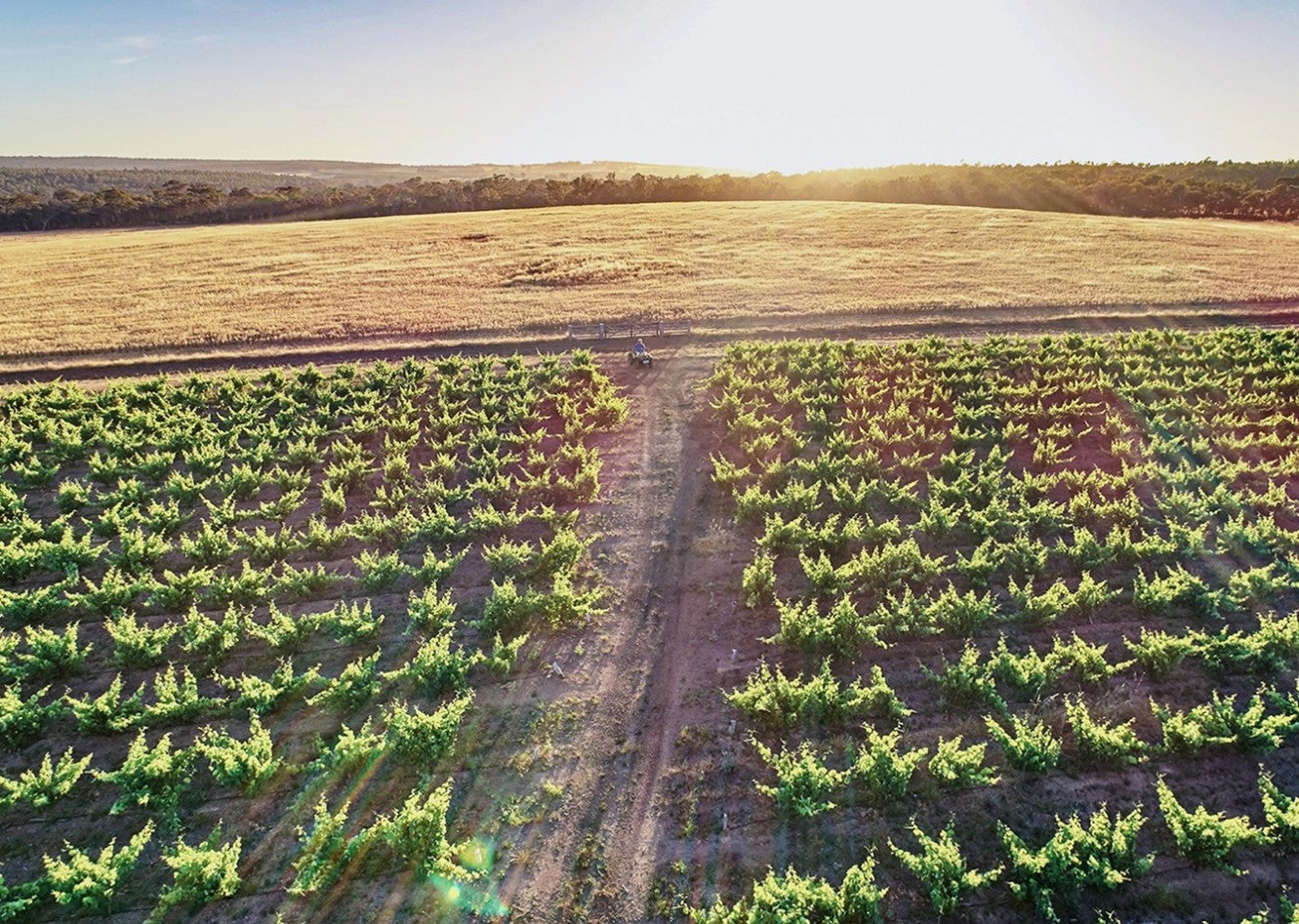Appellation Farvie

The Wines
Swinney Farvie Grenache 2022
In the late 1990s, Grenache was hardly known in Western Australia, let alone in Great Southern. But, inspired by the great wines of France and Spain—and believing that Grenache could do well in a region already building a reputation for high-quality Syrah—Matt Swinney ignored the experts (who said Grenache would never ripen in the cool climate of Frankland River) and planted the region’s first bush-vine Grenache vineyard. He did so with mass-selection cuttings provided by David Hohnen and gave his new vines pride of place on the site’s hilltops.
Take a walk through Swinney’s untrellised Grenache bush vines, and things change about halfway down the block planted in 2004 on the estate’s upper northeast-facing hillside crest. The soil gets leaner and shallower, with more gravel and a higher clay content. “That’s Farvie,” says Rob Mann. This fruit is different, too; it is more ferrous and mineral with fine, velvety tannins and so much complexity. Vines are picked over multiple passes, with only the best bunches from each vine—those sitting in the dappled light of the vine’s architecture—set aside for Farvie.
Once in the winery, the bunches are berry sorted, then gravity-fed to French oak for natural fermentation, incorporating 28% whole bunches. With Mourvèdre now a mainstay in the Farvie range in its own right, its inclusion in this wine has steadily decreased each year. This year, just 4% of Mourvèdre co-fermented with the Grenache (compared to 7% in 2020 and 14% in 2019). The wine spent 11 days on skins before being pressed to large, fine-grained, seasoned French oak vessels, where it matured for 11 months.
Swinney Farvie Syrah 2022
Farvie gives a remarkable expression of Australian Shiraz and puts Western Australia back in the conversation regarding benchmarks for this variety. Only a selected soil area in the Wilson’s Pool and Powderbark blocks is earmarked for Farvie Syrah, with the vines fostered to nourish and balance the fruit to optimum levels, allowing for dry farming.
Swinney’s 2022 Syrah was hand-harvested from select parcels planted to a range of clones, including 470, Waldron and Jack Mann’s heritage mass-selection Syrah. In the warmer conditions of 2022, Swinney’s shade cloth played a pivotal role, creating soft, mottled light to protect the skins and lower the temperature in the bunch zone. The fruit was sorted berry-by-berry in the winery, and this year, Rob Mann increased the whole bunch component from 58% (in 2021) to 65% to further promote ethereal structure and lightness of texture while also encouraging bright, spicy aromatics. Everything was gravity-fed to a French oak vat and two demi-muids for wild fermentation. The wine spent only 12 days on skins before being basket-pressed directly to large, fine-grained, seasoned French oak, where it rested for 14 months before bottling.
Mann fosters the Farvie plot’s innate savoury, ironstone and ferrous character, pushing it to take a lead role in the wine. Importantly, no new oak is used in the Farvie Syrah. “By using no new oak, you have to think a bit harder about how to build complexity, structure and perfume in Syrah,” explains Mann. “We build that complexity through viticulture, through bunches and time on lees. I think it’s another reason our Syrah is so distinctly different.”
Swinney Farvie Mourvedre 2022
This is just the second release of Farvie Mourvèdre, a wine crafted from a draconian selection of dry-grown bush vine Mourvèdre on the same kidney-shaped patch of dirt as the vines for the Farvie Grenache in the Wilson’s Pool vineyard. The vines here face northeast on leaner topsoil and with a higher percentage of coarse lateritic gravel; the roots have now made it down into the clay beneath. Meticulous fruit-thinning and selective hand-harvesting over multiple passes ensured Swinney achieved fruit as close to perfect as possible.
Last year’s release fermented entirely as whole bunches. This year, the bunches and berries were smaller, requiring Mann to tweak the percentage (66%) to achieve the perfect balance. According to Mann, the Farvie Mourvèdre loves bunches: “It helps to balance the wildness, gaminess and rustiness of the fruit while accentuating the spice element of the wine.” Regarding the process, the wine spent 11 days on skins before being pressed to large, fine-grained, seasoned French oak vessels, where it matured for 11 months.
As if last year’s wine didn’t set the bar high enough! “It might be my favourite wine I’ve ever made from Swinney,” says Rob Mann. “It’s so pretty; there’s a lovely natural balance and vitality that’s sometimes hard to capture. It’s pretty close to being a very, very good wine.”
Other Recent Releases
-
Cantina D’ArcyIt’s not always the case that hype and rarity equate to quality, yet that’s certainly t...It’s not always the case that hype and rarity equate to quality, yet that’s certainly the case with Tom Myers’ tiny Piemonte start-up. It was alway...
-
Equis and Domaine des LisesWe recently tasted these new releases with Thomas Schmittel in France and were suitably...We recently tasted these new releases with Thomas Schmittel in France and were suitably impressed. If you are unfamiliar with the name, Schmittel i...
-
Lambert WinesLuke Lambert has a twenty-year history with the Denton View Hill Vineyard, long enough ...Luke Lambert has a twenty-year history with the Denton View Hill Vineyard, long enough to know the granite slopes like the back...











